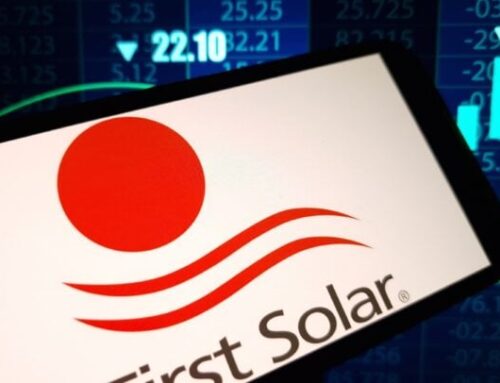How next-gen solar panels could go on lampposts, cars and even windows
October 5, 2025

Sunlight is the most abundant energy source on earth, now harnessed by a vast array of silicon solar panels on rooftops and in fields across the world. But a new generation of panels is emerging using a class of materials called perovskites, which can be thinner, lighter, less rigid and generate more power.
The technology means solar panels could be integrated into new places such as car roofs, lampposts and even windows. It also could mean increased solar power generation without having to devote as much land to solar farms.
How does it work?
Perovskite solar panels can come either with or without silicon. The most common type are “tandem” cells, with a layer of perovskite on top of the silicon.
The combination of the two kinds of material maximises the absorption of light to generate electricity. Perovskite is particularly effective at absorbing high energy “blue” light, while silicon is more effective at using lower energy “red” light.
FT Guides: climate tech

This is the latest part of the FT’s guide to the technologies that will help the planet reach net zero. Other articles cover next-gen solar panels and the thorny question of airplane contrails
Oxford PV, a UK developer of perovskite solar panels, says its tandem cells can generate 20 per cent more electricity from a given size of panel, and further gains are expected as the technology matures.
The other type of panel uses perovskite on its own, which is 200-300 times thinner than the silicon in solar cells. Multiple layers of perovskite can be used, with each one tuned to absorb different wavelengths of light. This type of panel is much more flexible than those that use silicon.
Perovskite-only cells can be “wrapped into a roll” while tandem cells could bend slightly to “go over the wing surface of an aircraft”, according to Oxford PV chief executive David Ward.

What are the pros and cons?
As tandem solar panels are more efficient than silicon, they can generate the same amount of energy from a smaller space, freeing up land for other uses. Meanwhile, the thinness and flexibility of perovskite-only panels means they could be deployed on a variety of different surfaces, such as bus shelters, building facades or electric vehicles’ roofs. When engineered to be semi-transparent, they could be added to windows while still letting in sunlight.
The manufacturing process is also relatively simple and energy efficient. The perovskite solution can be sprayed on to a surface like an ink. It is then heated to allow it to crystallise, at much lower temperatures than those required to purify silicon.
But perovskites are also more vulnerable to degrading. “Once you crystallise [the perovskite], it still leaves a few gaps and solvents in there, which means those are susceptible to oxygen and humidity,” explains Professor Ravi Silva, director of the Advanced Technology Institute at the University of Surrey, which researches perovskite cells.
Although protective casings can be added, they still do not last as long as silicon panels. Oxford PV’s tandem panels have an expected life of 10 years — the company aims to raise that to 20 years by 2027. Silicon panels, by contrast, typically have a lifespan of 25 years.
The two most common perovskites that are used to produce solar cells both contain lead, a toxic metal that can seep into the environment and cause health problems, although lead-free alternatives are being developed.
Will it save the planet?
If the world is to reach net zero by 2050, a fifth of global energy will need to be supplied by solar, the International Energy Agency has forecast. Perovskite cells could help speed that along.
Last year, 2,131 terawatt hours of electricity was produced from solar panels. Given tandem panels are currently 20 per cent more powerful than traditional panels, that would translate to an extra 426TWh of electricity — about the same as the total electricity output of Germany. And that is before the potential extra capacity that would come from additional solar panels being installed in new locations.
The cost of land for solar panels is a significant limiting factor in densely populated countries. South Korea and Japan are both developing perovskite panels that can be integrated into urban environments.
But cheap silicon panels dominate the market and supplanting them, even with more powerful cells, will not happen quickly.
Has it arrived yet?

Some companies have begun to sell perovskite solar panels as part of pilot programmes, in advance of mass production.
Last year Oxford PV, a spin out from Oxford university, announced what it said was the first commercial shipment of tandem panels, which were manufactured in its factory in Germany for a US-based customer.
The company’s current panels are 25 per cent efficient, meaning they convert 25 per cent of the solar energy that reaches them into electricity. The figure surpasses standard silicon panels, which tend to be around 20-23 per cent, according to FT research. It is aiming for large-scale production from 2027.
China’s GCL Perovskite, partly owned by energy giant GCL, says it plans for “commercialisation” of its tandem panels to start next year.
Perovskite-only panels are still largely at the stage of being developed, rather than in commercial production. Martin Wang, a director at GCL Perovskite, says that the technology cannot currently compete with the efficiency and low cost of traditional solar panels.
Who are the winners and losers?
Chinese companies stand to benefit significantly, because their dominance in silicon panel manufacturing means they already occupy a central position in the solar supply chain.
For the rest of the world, there is a risk from supply chains being almost entirely dependent on China. This is partially because of geopolitical tensions, but Yana Hryshko, head of solar supply chain research at Wood Mackenzie, warns of other events that could cause similar supply chain disruptions: “What if there is a great big natural disaster? Anything can happen in the world. This is just the same logic as ‘don’t put all the eggs in one basket’.”
Who is investing in it?
Established solar energy companies are looking to diversify into perovskite technology, as well as start-ups such as Oxford PV. In China, Trinasolar, Longi, and JinkoSolar are all investing in tandem solar panel production.
South Korea’s Q-Cells is planning mass production of tandem panels by 2027, and the Japanese government has announced $167mn in subsidies over the next five years to three companies advancing mass production of perovskite solar cells.
This is on top of up to $1bn worth of subsidies to Japan’s Sekisui Chemical, helping to fund a gigawatt-scale factory by 2030.
Search
RECENT PRESS RELEASES
Related Post




